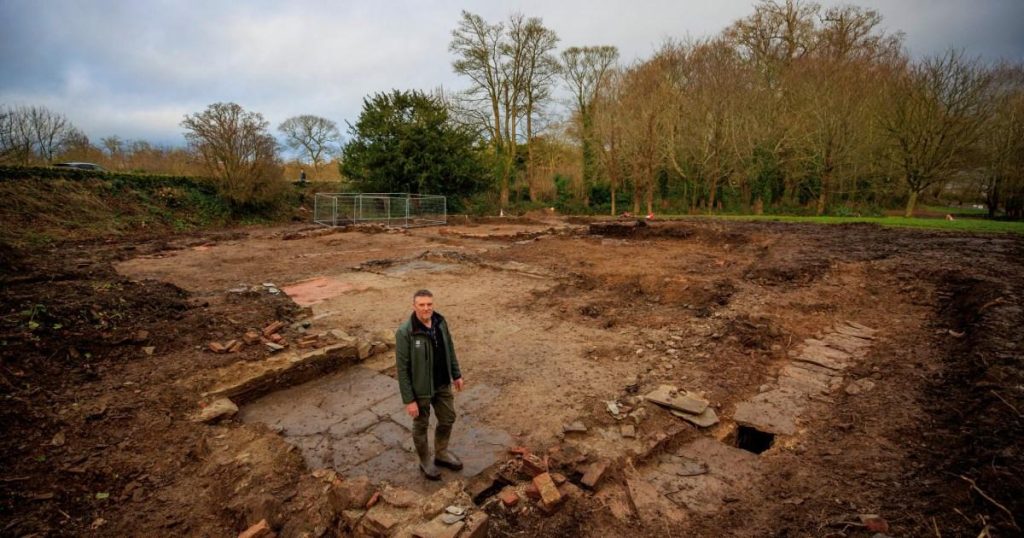Paragraph 1: An Unexpected Discovery
During seemingly routine drainage work at the historic Castle Ward estate in County Down, Northern Ireland, archaeologists stumbled upon a remarkable find – the remnants of a 300-year-old building complex. The discovery was completely serendipitous, as the area chosen for the new drainage system was thickly vegetated and assumed to be devoid of any historical significance. The initial unearthing of red bricks during trench digging sparked further investigation, leading to the realization that a significant historical site lay hidden beneath the surface.
Paragraph 2: Unveiling the Past
As the earth was carefully peeled back, the full extent of the buried complex began to emerge. A central cobbled courtyard formed the heart of the site, surrounded by several tiled buildings. Further excavation revealed essential household features such as a sink, fireplace, cellar, and drains, painting a picture of daily life in the 17th or early 18th century. The discovery of butchered animal bones, pottery shards, glass bottles, and ceramics added further insights into the activities that took place within these long-forgotten walls. One particularly exciting find was a small, perfectly preserved ceramic pot, generating significant interest among the archaeological team.
Paragraph 3: A Glimpse into History
The unearthed buildings predate the current Castle Ward mansion, which began construction in the 1760s. While a house was known to have stood on the site earlier in the century, the newly discovered complex offers a unique window into the estate’s earlier history. Experts believe that these buildings served a combination of domestic and agricultural purposes, supporting the activities of the estate’s inhabitants. The presence of everyday household items alongside animal remains reinforces this theory, suggesting a close integration of living and working spaces.
Paragraph 4: The Fate of the Lost Buildings
The reason for the buildings’ demise remains a subject of speculation, but a leading theory suggests they were deliberately demolished to make way for the grand new mansion. Their location, obstructing the picturesque views of Strangford Lough, likely sealed their fate. The decision to erase them from the landscape highlights the changing priorities of the estate’s owners, prioritizing aesthetics and grandeur over preserving the remnants of the past.
Paragraph 5: The Significance of the Find
The unexpected discovery at Castle Ward underscores the importance of archaeological monitoring during construction projects, even in areas presumed to be historically insignificant. This chance find has unearthed valuable insights into the estate’s past, revealing a hidden chapter in its long and rich history. The recovered artifacts and building remains offer tangible connections to the lives of those who lived and worked on the estate centuries ago, enriching our understanding of their daily routines and activities.
Paragraph 6: Preserving the Past for the Future
The meticulous excavation and analysis of the discovered complex are now underway, led by the Historic Environment Division. This careful work will help to piece together a more complete picture of the site’s history, providing valuable context for understanding the evolution of Castle Ward and its surrounding landscape. The unexpected discovery serves as a powerful reminder that the past can often lie hidden just beneath the surface, waiting to be unearthed and shared with future generations. The tiny ceramic pot, among other artifacts, stands as a testament to the enduring power of these remnants, connecting us to the people who once called this place home.




